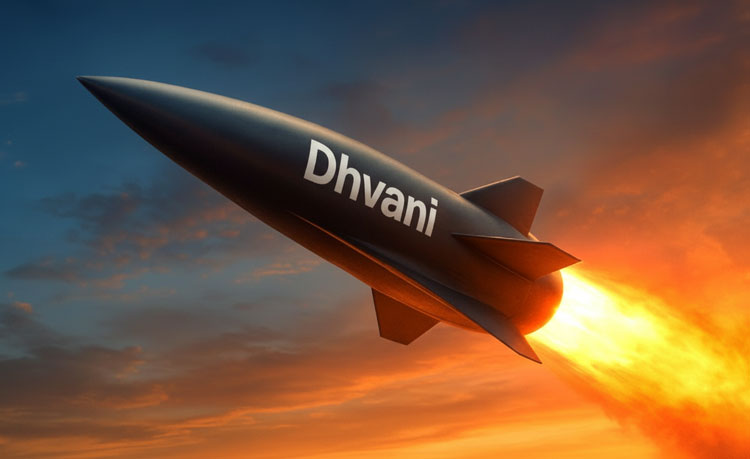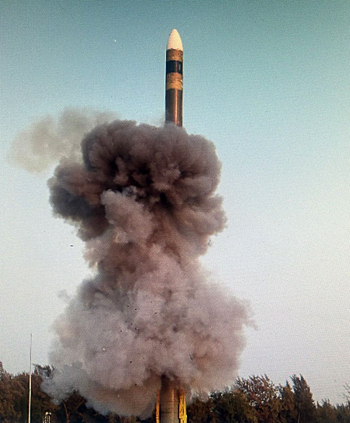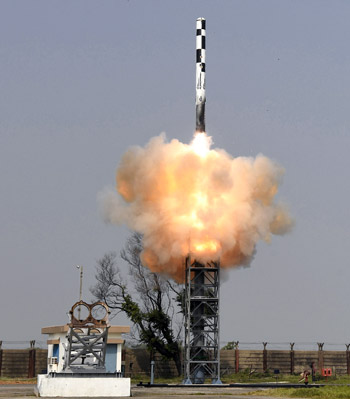INDIAN ARMED FORCES CHIEFS ON OUR RELENTLESS AND FOCUSED PUBLISHING EFFORTS

The insightful articles, inspiring narrations and analytical perspectives presented by the Editorial Team, establish an alluring connect with the reader. My compliments and best wishes to SP Guide Publications.

"Over the past 60 years, the growth of SP Guide Publications has mirrored the rising stature of Indian Navy. Its well-researched and informative magazines on Defence and Aerospace sector have served to shape an educated opinion of our military personnel, policy makers and the public alike. I wish SP's Publication team continued success, fair winds and following seas in all future endeavour!"

Since, its inception in 1964, SP Guide Publications has consistently demonstrated commitment to high-quality journalism in the aerospace and defence sectors, earning a well-deserved reputation as Asia's largest media house in this domain. I wish SP Guide Publications continued success in its pursuit of excellence.
Dhvani Hypersonic Missile
Dhvani programme is largely indigenous, with high percentages of components designed and produced within India, aligning with the Atmanirbhar Bharat (self-reliant India) initiative.
 |
The Author is Former Director General of Information Systems and A Special Forces Veteran, Indian Army |

India's BrahMos missile, a joint India-Russia product, is currently the fastest cruise missile in the world with a top speed of about Mach 2.8-3. BrahMos is a supersonic cruise missile that follows a powered and relatively predictable path. India's pinpoint BrahMos missile strike that effectively targeted Pakistan Air Force's infrastructure (including airfields and air defence systems) during Operation 'Sindoor' was witnessed globally. The Philippines has imported BrahMos missile systems from India. Vietnam is in advanced negotiations to acquire the missile, with a $700 million deal for their army and naval forces. Several other nations, including Indonesia, Malaysia, and Middle Eastern countries like the UAE, have shown strong interest and are in advanced stages of discussions to purchase the BrahMos supersonic cruise missile.
India is now developing the 'Dhvani' hypersonic glide vehicle (HGV) which is expected to be more than double the speed of the BrahMos missile; exceeding Mach 5 (over 7,400 km/h).
But India is now developing the 'Dhvani' hypersonic glide vehicle (HGV) which is expected to be more than double the speed of the BrahMos missile; exceeding Mach 5 (over 7,400 km/h). Dhvani will glide unpowered during its terminal phase, allowing it to execute sharp manoeuvres that complicate interception.
Dhvani is being developed by the Defence Research and Development Organisation (DRDO), building on the technology proven during the Hypersonic Technology Demonstrator Vehicle (HSTDV) test conducted by DRDO on September 7, 2020 successfully, which developed critical scramjet propulsion and heat shielding; demonstrating India's indigenous hypersonic air-breathing scramjet technology at speeds of Mach 6. A full-scale model of Dhvani was showcased by the DRDO in early 2025.
Dhvani combines extreme speed with high manoeuvrability and is a crucial step in enhancing India's strategic deterrent capabilities

Key features of Dhvani, which is about 9 metres long and 2.5 metres wide, are:
- Speed and Range - Dhvani will fly at hypersonic speeds (faster than Mach 5) and has an estimated operational range between 6,000 and 10,000 km, potentially extending the reach of India's current missile systems – doubling the range of the Agni-5 missile;
- Manoeuvrability and Stealth - the missile utilises a glide profile after boost, allowing it to change course dynamically to avoid detection and interception by existing defence systems. It also features a low radar cross-section (RCS) design to further reduce its detectability;
- Heat Protection - the missile features an Ultra-High-Temperature Ceramic Composite (UHTCC) heat protection systemto withstand the extreme temperatures to survive temperatures between 2,000°C and 3,000°C generated during atmospheric re-entry;
- Propulsion and Design - building on India's previous HSTDV programme, Dhvani is expected to use advanced technologies like scramjet propulsion and has a blended wing-body configuration designed for efficient flight.
Acquiring advanced Indian missiles like the BrahMos or Dhvani could significantly enhance Greece's deterrent capability in the ongoing military rivalry with Turkey

Dhvani is a crucial step in enhancing India's strategic deterrent capabilities. Dhvani combines extreme speed with high manoeuvrability. It is expected to reshape South Asia's security dynamics and boost India's strategic deterrence; potentially shifting security balances in South Asia and the Indo-Pacific region. Dhvani creates a technological gap over Pakistan, which relies on conventional ballistic missiles. Its development positions India among a select group of global powers with advanced hypersonic weapons, demonstrating a transition from experimental platforms to weaponised systems. The programme is largely indigenous, with high percentages of components designed and produced within India, aligning with the Atmanirbhar Bharat (self-reliant India) initiative.
Reports in Greek media have lauded India's indigenously developed 'Dhvani' hypersonic missile, describing it as a potential "game-changer" for security in the region. The coverage urges Greece to acquire India's BrahMos cruise missile system to counter regional rivals. Greek media highlighted India's Dhvani missile development in early October 2025; suggesting Greece should acquire the BrahMos to counter Turkey's naval power in the Eastern Mediterranean and the Aegean Sea. Speculation about India potentially offering missile systems to Greece has caused unease in Turkey. Some outlets frame the developing India-Greece defence cooperation as a response to Turkey's support for Pakistan during Operation 'Sindoor', and that acquiring advanced Indian missiles like the BrahMos or Dhvani could significantly enhance Greece's deterrent capability in the ongoing military rivalry with Turkey.
Following successful testing, operational deployment of Dhvani is expected by 2029–2030. It would place the nation among a select group of countries with operational hypersonic weapon systems

Interestingly, North Korea has unveiled what it claims is its new hypersonic missile, named 'Hwasong-11Ma', at the Pyongyang Arms Expo according to news reports of October 7, 2025. The missile is designed to be fired from a 10-wheeled transporter-erector-launcher (TEL) that can carry two of these missiles together. Derived from the earlier Hwasong-11 series of short-range ballistic missiles (SRBMs), the Hwasong-11Ma variant has an unpowered boost-glide vehicle on top instead of a traditional warhead and, as a result, is designed to function in a completely different manner. Another hypersonic missile design, the Hwasong-8, was unveiled by North Korea in 2021.
As of late 2025, the Dhvani is in the advanced stages of development, with a first flight test anticipated by the end of the year. Following successful testing, operational deployment of Dhvani is expected by 2029–2030. The Dhvani is considered a major strategic deterrent for India. It would place the nation among a select group of countries with operational hypersonic weapon systems, including the US, China and Russia; especially since the Dhvani is designed to deliver both conventional precision strikes and strategic warheads from land, sea, or air platforms.





